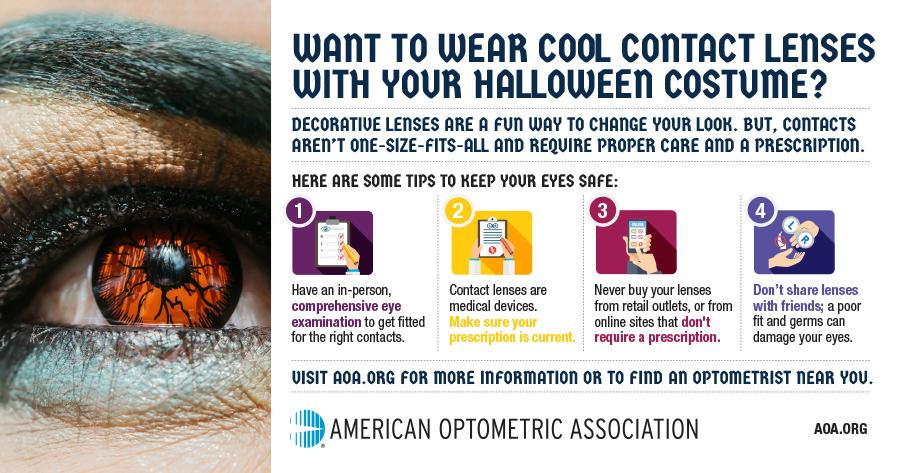
Contact Lens Safety
Are you a contact lens wearer who values the health and safety of your eyes? Then look no further, because we have some crucial information for you. In this article, we will explore the importance of contact lens safety and provide essential tips to ensure the well-being of your eyes. Whether you're a seasoned contact lens user or just starting out, this article is here to guide you and answer all your eye care questions. So let's dive into the world of contact lens safety and keep your eyes healthy and vibrant!
Preventing Eye Infections
Maintaining proper hygiene is crucial for preventing eye infections. This includes regularly washing your hands before handling contact lenses and avoiding touching your eyes with dirty hands. Additionally, make sure to clean your contact lenses regularly to remove any buildup of bacteria or debris that can cause infections.
Avoiding water contact is another important step in preventing eye infections. Water, whether it is tap water, shower water, or swimming pool water, can contain harmful microorganisms that can lead to infections. Therefore, it is essential to remove your contact lenses before coming into contact with water.
Establishing a disposal schedule is also vital in preventing eye infections. Contact lenses have a lifespan, and extended use can increase the risk of infections. Follow the recommended replacement schedule as instructed by your eye care professional or the lens manufacturer to ensure the highest level of cleanliness and safety.
Choosing the Right Contact Lens
Consulting an eye care professional is the first step in choosing the right contact lens. They will assess your eye health, discuss your needs and lifestyle, and help determine the most suitable type of contact lens for you.
Considering lifestyle and needs is crucial when selecting contact lenses. Factors such as your daily activities, comfort preferences, and vision requirements should be taken into account. For example, if you participate in sports or have a busy lifestyle, you may benefit from daily disposable lenses for convenience and hygiene.
Understanding the different types of contact lenses is essential in making an informed decision. There are various options available, including soft lenses, rigid gas permeable lenses, toric lenses for astigmatism, and multifocal lenses for presbyopia. Each type has its advantages and considerations, so discussing these options with your eye care professional is important.
Getting the correct prescription is crucial to ensure optimal vision and comfort with your contact lenses. An eye exam will determine your prescription, which includes measurements such as base curve and diameter. Your eye care professional will also consider your specific vision needs, such as nearsightedness, farsightedness, or astigmatism, to provide you with an accurate prescription.
Proper Lens Handling
Washing your hands before handling contact lenses is an essential step in preventing infections. Use mild soap and warm water, and make sure to rinse and dry your hands thoroughly. By doing so, you minimize the transfer of dirt, bacteria, and oils onto your lenses and reduce the risk of contamination.
Using recommended solutions is important for cleaning and storing your contact lenses. Follow the instructions provided by your eye care professional or the manufacturer to ensure compatibility and effectiveness. Never use tap water or homemade solutions, as they can harbor harmful microorganisms and damage the lenses.
Avoiding lens contamination is crucial in maintaining eye health. Be cautious not to touch the tip of the solution bottle to any surface, including your fingers or contact lens case, as this can introduce bacteria. Additionally, avoid exposing your lenses to hairspray, perfume, or other chemicals that can adhere to the lenses and cause discomfort or infections.
Storing lenses properly is necessary to prevent damage and bacterial growth. Use a clean contact lens case and fill it with fresh solution each time you store your lenses. Never reuse old solution or "top off" the existing solution in your case, as this can lead to contamination. Replace your lens case regularly to minimize the risk of bacteria buildup.
Recognizing and Addressing Discomfort
Identifying symptoms of discomfort is important, as it can indicate a problem with your contact lenses. Pay attention to signs such as redness, itching, burning, excessive tearing, or blurred vision. If you experience any of these symptoms, remove your lenses and contact your eye care professional for guidance.
Examining the lens for damage or debris is a crucial step if you experience discomfort. Hold your lens up to the light and check for any scratches, tears, or foreign particles. If you notice any issues, do not attempt to wear the lens again. Contact your eye care professional for further evaluation and replacement if necessary.
Ensuring correct lens placement is important for comfort and optimal vision. If your lens feels uncomfortable, it may not be positioned correctly on your eye. Follow the insertion and removal techniques taught by your eye care professional to ensure proper alignment. If you are unsure, seek assistance from your eye care professional.
Taking breaks when needed is essential for maintaining comfortable and healthy eyes. Contact lenses can sometimes cause dryness or fatigue, especially during prolonged use. If you experience discomfort or notice a decline in vision quality, remove your lenses and give your eyes a break. It is also a good opportunity to clean and disinfect your lenses properly.
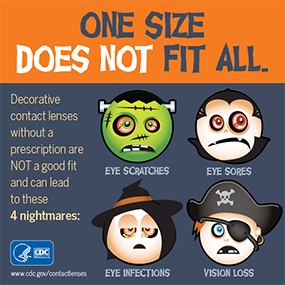
This image is property of www.cdc.gov.
Dealing with Allergic Reactions
Recognizing allergy symptoms is crucial in managing contact lens-related allergies. Symptoms may include redness, itching, swelling, or excessive tearing. If you suspect an allergic reaction, remove your lenses and contact your eye care professional for guidance.
Switching to hypoallergenic lenses may be necessary if you have known allergies. These lenses are made from materials that are less likely to cause an allergic response. Discuss with your eye care professional to determine if hypoallergenic lenses are suitable for you.
Consulting an eye care professional is essential for managing contact lens-related allergies. They can evaluate your symptoms, discuss potential triggers, and provide appropriate treatment options. Allergy management may involve medication, changing lens materials, or adjusting your lens wearing schedule.
Off-label medical solutions should be avoided without professional advice. While there are anecdotal reports of using certain solutions or treatments for allergy relief, it is crucial to consult with your eye care professional before attempting any off-label treatments. They can provide accurate information and guidance based on your specific needs.
Contact Lens and Makeup
Applying makeup before inserting lenses is recommended to minimize the risk of makeup particles getting trapped under the lenses. Start your makeup routine by thoroughly washing your hands and applying all desired makeup products, excluding mascara and eyeliner. Afterward, insert your contact lenses carefully to avoid smudging or dislodging your makeup.
Choosing eye-friendly makeup products is important for maintaining healthy eyes. Avoid using products that contain irritants or potential allergens, such as fragrances or glitter particles. Opt for hypoallergenic or ophthalmologist-tested makeup options that are formulated specifically for contact lens wearers.
Avoiding excessive use of makeup is beneficial for preventing potential eye irritation. Heavy makeup, especially around the eyes, can increase the risk of particles or chemicals coming into contact with your lenses. Using a light touch and focusing on enhancing your natural features can help minimize these risks.
Removing lenses before makeup removal is recommended to prevent makeup residue from coming into contact with your lenses. Remove your lenses first, following the proper technique taught by your eye care professional. Once your lenses are safely removed, proceed with your makeup removal routine using gentle, oil-free products.
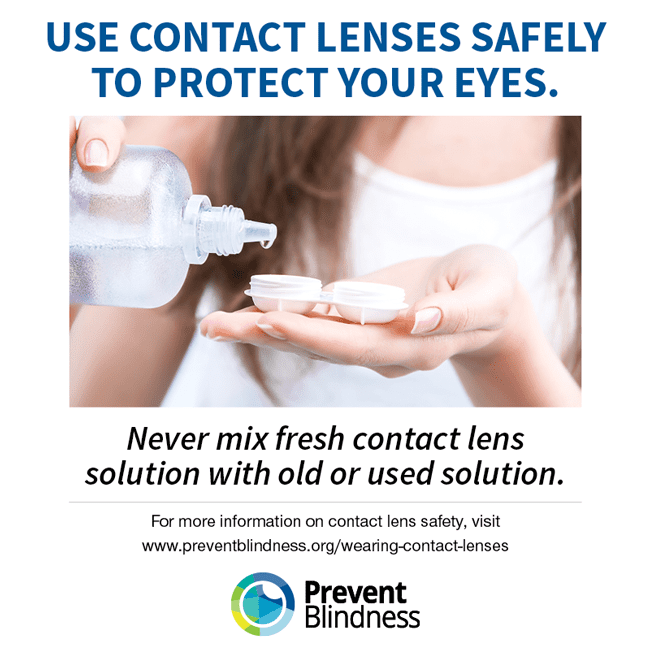
This image is property of preventblindness.org.
Handling Contact Lens Solutions
Using unexpired products is crucial for maintaining the effectiveness of contact lens solutions. Check the expiration date on the solution bottle before use. Expired solutions may lose their disinfecting properties, making them less effective in killing bacteria and other microorganisms.
Following manufacturer instructions is important in using contact lens solutions correctly. Each solution may have specific instructions for usage, cleaning, and storing contact lenses. Make sure to read and adhere to these instructions to ensure the best outcomes for your contact lens hygiene.
Avoiding mixing different solutions is important for maintaining the integrity and safety of your contact lenses. Do not mix different brands or types of solutions unless specifically instructed to do so by your eye care professional. Mixing solutions can lead to adverse reactions or ineffective cleaning and disinfection.
Storing solutions properly is necessary to prevent contamination and maintain their effectiveness. Keep your solution bottles tightly closed when not in use, and store them in a cool, dry place away from direct sunlight. Exposure to heat, light, or humidity can compromise the quality of the solution.
Understanding Contact Lens Terms
Base curve refers to the curvature of the lens that matches the curvature of your eye. It is measured in millimeters and determines the fit of your contact lenses. An accurate base curve measurement ensures comfort and stability of the lenses on your eyes.
Diameter refers to the size of the lens, specifically its width. It is also measured in millimeters and determines how the lens covers your cornea. An appropriate diameter measurement is important to prevent discomfort or rubbing against the edges of your eyes.
Prescription and power refer to the specific vision correction needed for your eyes. Whether you are nearsighted, farsighted, or have astigmatism, a prescription is required to ensure that the lenses provide the correct focal point for your eyes. The power measurement determines the strength of the lens correction.
Water content refers to the percentage of water in the lens material. Different contact lenses have varying water content, which can affect their comfort and durability. Higher water content lenses tend to be more comfortable but may be more prone to drying out.
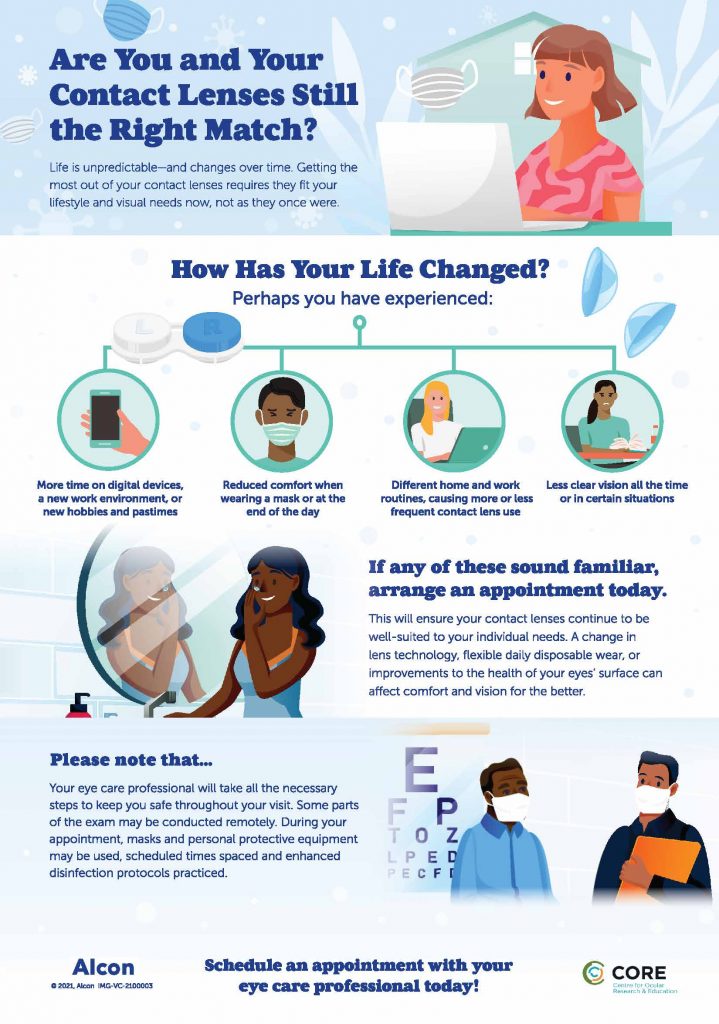
This image is property of core-uwaterloo.s3.amazonaws.com.
Common Mistakes to Avoid
Sleeping with contacts is a common mistake that can lead to serious eye infections. It is important to follow the recommended wearing schedule, which often excludes overnight use. Sleeping with contacts can reduce the oxygen supply to your cornea and increase the risk of bacterial growth.
Using old or expired lenses is risky and can lead to discomfort and potential eye infections. Always check the expiration date on your lens packaging and replace them as instructed by your eye care professional. Using expired lenses can compromise their integrity and increase the risk of complications.
Sharing lenses with others is a mistake that should be avoided at all costs. Contact lenses are personalized medical devices, and sharing them can increase the risk of infections or transmission of bacteria. Each person's eyes have unique characteristics, and using someone else's lenses can lead to adverse effects.
Ignoring discomfort is a common mistake that can worsen eye health issues. If you experience any discomfort or notice changes in your vision while wearing contact lenses, do not ignore these signs. Promptly remove your lenses and seek guidance from your eye care professional. Ignoring discomfort can lead to more severe complications.
Regular Eye Exams and Follow-up
The importance of routine eye exams cannot be overstated. Regular eye exams help ensure that your eyes are healthy and your contact lens prescription is up to date. Your eye care professional will assess your eye health, check the fit and condition of your contact lenses, and address any concerns or questions you may have.
Updating your contact lens prescription is necessary to maintain optimal vision and comfort. As your eyes change over time, so may your contact lens needs. Regular eye exams allow your eye care professional to adjust your prescription accordingly, ensuring that your lenses provide the best possible vision correction.
Discussing any concerns with your eye care professional is essential for personalized care. If you have any questions or experience any issues with your contact lenses, do not hesitate to reach out to your eye care professional for guidance. They are there to help and provide the best advice tailored to your specific needs.
Following advice and recommendations provided by your eye care professional is crucial for maintaining healthy eyes and safe contact lens wear. They will provide specific instructions on cleaning, storing, and wearing your lenses, as well as any additional recommendations based on your individual needs and lifestyle. By following their guidance, you can enjoy comfortable and hassle-free contact lens wear.
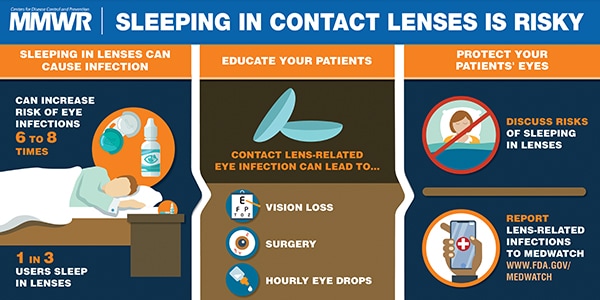
This image is property of www.cdc.gov.


